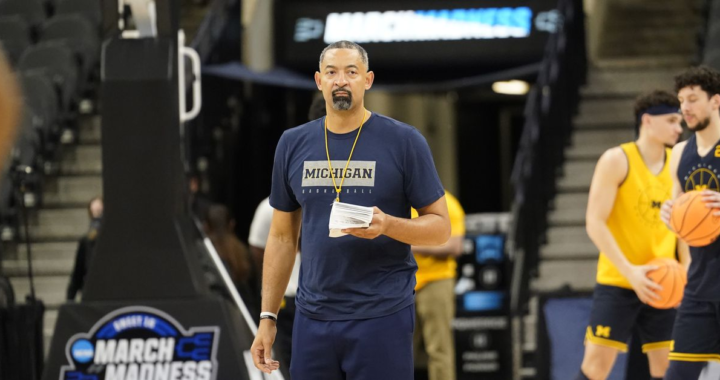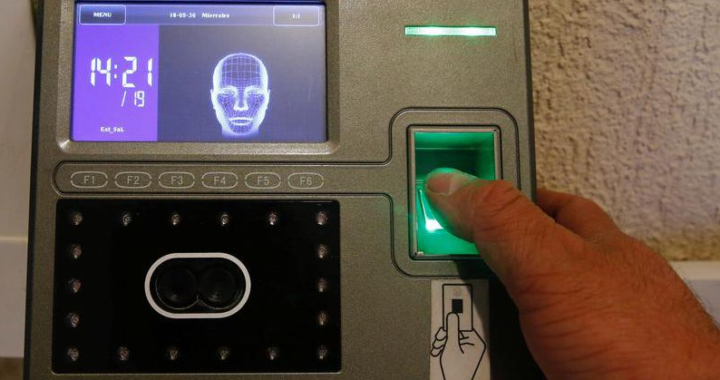Art Busts Are Booming. More People Are Buying Them
5 min read
Meet Glenda. She has wisps of gold in her white hair, melatonin-drooped eyes and a tragic lack of torso.
A nickname coined at the Philadelphia office of Anthropologie, Glenda is a bust planter officially known as Grecian Bust Pot, with a gaping crevice where her cement brain would have been. When the lifestyle chain store introduced the piece in 2018, it quickly sold out. Now available in two sizes (small, for $24, and large, for $44), it is a consistent best seller in Anthropologie’s “giftables” category, said Mary Beth Sheridan, the company’s chief home merchant.
I first spotted Glenda in a TikTok video of Brigette Muller’s apartment in Greenpoint, Brooklyn, where the bust sat on a mantle. Ms. Muller, 34, a freelance content creator, describes her decorating style as “feminine and beautiful,” “classy and elevated.” She bought Glenda in 2019 to make her space “feel more elevated and mature,” she said.
“All of a sudden I became really interested in statues and columns,” Ms. Muller added. “That kind of classy Greek feeling.”
That interest is not unique to her: On Etsy, there was a nine percent increase in searches for busts or statues made of concrete, cement, ceramic, clay or marble in 2021 compared to 2020, said Dayna Isom Johnson, a trend expert at the company.
The online marketplace currently has some 158,000 listings for busts, including a 3D-printed bust of the Greek poet Sappho (from $13), a gilt bust of Donald Trump ($125), wax candle busts too pretty to burn and a bust of Jeff Bezos ($59) that doubles as a stand for headphones (interestingly, it is not for sale on Amazon).
On Chairish, an online secondhand marketplace for furniture and décor, the number of busts for sale increased by 150 percent from December 2020 to December 2021, said Noel Fahden, its vice president of merchandising. Among them: A cast stone bust of Hermes for $3,400, which includes a pedestal.
Historically, the term “bust” has referred to both a sculpted torso (hence “bust,” as in cleavage) and sculptures of heads. The latter, also known as portrait busts, were made as lifelike memorials for the dearly departed, typically carved of marble and owned by the nobility.
As the art form popularized again during the Renaissance in Europe, royalty had busts made “as a kind of propaganda,” said Emerson Bowyer, Searle curator of painting and sculpture at the Art Institute of Chicago. “A bust of Napoleon in your house somehow links you to Napoleon,” explained Mr. Bowyer, who owns a bust of Napoleon. “And so I think there’s that sense of the creation of imaginary genealogies.”
Throughout the Renaissance and into the 19th century, busts mostly appeared in city centers and in the homes of those who could afford hand-carved marble. Today, mass manufacturing, 3-D printing, cheaper materials and a robust online network of secondhand retailers have democratized the art form. Busts are no longer just hallowed relics, but knickknacks available to anyone with a naked bookshelf.
On Amazon, a popular portrait bust is a $22 replica of Michaelangelo’s David made of resin. A far cry from marble, Mr. Bowyer says it is “still imbued in some way with the aura of the original object.”
David Land, 48, a photographer-director, has at least eight busts at his home in Brooklyn, where he lives with his husband, Rumaan Alam, 44, a writer and author, and their two sons. Their collection runs the gamut from playful (a spray-painted “David-ish” bust, as Mr. Land put it, made of plaster of Paris by the artist Kelly O’Neal that the couple bought last year), to historic (a papier-mâché bust of Haitian revolutionary Jean-Jacques Dessalines), to camp (David Bowie as Ziggy Stardust, also made of papier-mâché).
Their most prized bust, “St. Francis of Adelaide,” a small marble piece by Kehinde Wiley, depicts a Black man wearing a tank top holding the globus cruciger, a symbol of regality, in a saintly pose. It sits on Mr. Alam’s desk. “Our sons are African American,” Mr. Land said. “It’s important for us to have art in the home that reflects who we are as a whole family.”
Mr. Wiley’s “St. Francis of Adelaide” is one of many busts that reflect a desire of collectors to see themselves in the art form. After purchasing an ivory-colored Imani bust ($38) from Etsy shop Purely Human Nature last year, Natalie Holbenn, 35, immediately bought a second piece in “coffee,” the shade closest to her wife’s skin tone.
Ms. Holbenn, who works on the member services team of the Portland Japanese Garden, placed the pair of busts around a photo of the couple on a bookshelf at their home in Portland, Ore. “I bought them because they’re not like usual sculptures,” she said. “Most are slim and ‘perfect.’ These busts were perfect to me and much more realistic.”
Samira Sinare, the maker who runs Purely Human Nature, says she gets requests for custom busts depicting the bodies of breast cancer survivors and transgender people, which she accommodates when she can. (Ms. Sinare, who lives in New York, uses molds to make her concrete busts.)
Perhaps no contemporary maker has had more fun with busts than the potter Jonathan Adler, who has been sculpting them for decades at his New York studio. “Where don’t I have a bust?” he said on a phone call. “I’m staring at one as we speak!”
Specifically, it was his Atlas Split bust vase ($450), a multi-faced piece made of white porcelain with gold accents, in which he’d stuffed some ostrich feathers. For his recent Grand Tour collection, Mr. Adler made a series of classical-style portrait busts inspired by the meandering European vacations the wealthy used to take in the 18th and 19th centuries, from which they’d often return with a souvenir bust or two.
Each of the three styles — God ($895), Goddess ($895) and Soldier ($495) — is molded with two pieces of acrylic sandwiched around an etching and designed to fit on narrow mantelpieces.
“I think there’s been a real trend in the decorating world to take things that are traditionally very serious and to slightly deface them,” Mr. Adler said. In the case of Anthropologie’s Glenda or his bust vases, that means carving a small hole in the head; for his Grand Tour busts, it meant designing them to “hit all the right notes of scale, savoir faire and a wink.”
Mr. Adler said that people have a “biological imperative” to gaze upon the human face and thinks sculpture allows for a truer approximation of that experience than any other art form.
Patrick Monahan, an art adviser in New York who has bought a few busts for recent clients, suggested another reason for the renewed interest in them.
“After all this time indoors, we just need someone new to talk to,” he said.
All Consuming is a column about things we see — and want to buy right now.





